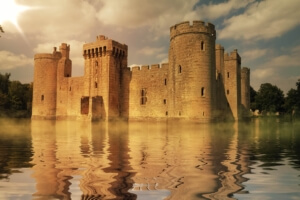Ley Lines – Earth’s Energy Highways
Ley Lines: The Mysterious Energy Paths That Shape Our World
Ley Lines are powerful, invisible paths that cross the Earth, connecting sacred sites and monuments. Explore their mystery and how these energy grids have influenced ancient cultures.
Introduction: What Are Ley Lines?
These lines are often referred to as invisible energy pathways, are said to connect significant monuments and ancient sites across the globe. These lines have long fascinated researchers, spiritualists, and explorers alike. Some believe these paths form a vast network, drawing energy from the Earth’s core, while others argue that they serve as a type of mystical map left behind by ancient civilizations.
Though the concept of ley lines was once considered controversial, it has continued to gain attention. Many now accept the idea that these lines connect not only physical landmarks but also spiritual energy, influencing people in ways that modern science cannot fully explain. In this article, we’ll examine ley lines, their origins, and the many theories surrounding them.
The Origins
The idea first emerged in 1921, when Alfred Watkins, a British antiquarian, noticed that numerous ancient sites in England seemed to align along straight paths. Watkins speculated that these sites, which included standing stones, burial mounds, and churches, had been placed deliberately along these lines by ancient peoples for reasons related to navigation, communication, or ritual practices.
Watkins coined the term “ley lines” to describe these energetic alignments. Initially, his theory was met with skepticism. However, over the decades, the idea gained momentum, particularly within the fields of mysticism and alternative history. Some researchers believe that these lines represent Earth’s magnetic fields, connecting sites of power and influence. Others argue that ley lines could be paths of spiritual energy, affecting human behavior and consciousness in subtle ways.
How They Work: Theories and Beliefs
While mainstream science has yet to embrace the idea of these lines as energy pathways, several alternative theories suggest that these lines are part of a global geodesic grid. Let’s take a look at the most widely discussed theories:
- Ley Lines as Energy Pathways: A common belief is that ley lines function as channels for natural Earth energy…
- Sacred Sites and Ancient Monuments: In addition to being energy conduits…
- A Global Grid System: Some scholars believe that ley lines form part of an ancient, global energy grid…
Famous Ley Lines Around the World
Across the globe, several energy lines are well known for their connections to significant landmarks…
How They Work: Theories
Several theories explain how these mysterious lines work. While mainstream science hasn’t fully embraced the idea of
<!– How The Energy Lines Work:
🔗 Read more about Alfred Watkins’ work on ley lines
Spiritual and Mystical Energy
This phenomenon attracts those who believe in Earth’s subtle energies. Some spiritual seekers think ley lines can be harnessed through meditation and energy healing. Sites like Stonehenge and Machu Picchu are said to sit along these powerful energy paths.
In China, people refer to these pathways as “Dragon Lines.” In feng shui practices, they connect the natural landscape with spiritual harmony and prosperity.
🔗 Discover how ley lines relate to feng shui
Global Networks
These energy lines aren’t limited to one country. Believers argue that these lines form a vast, global network that connects ancient sites around the world. For instance, the Great Pyramids of Egypt, the Nazca Lines in Peru, and ancient temples in Asia may all share connections through these mysterious pathways.
These ideas continue to inspire travel, research, and spiritual exploration.
Skepticism and Scientific Debate
Some scientists and archaeologists argue that these alignments are simply coincidental. They say our brains are wired to see patterns—even where none exist. This phenomenon is called pareidolia.
Moreover, there is no scientific proof that ley lines carry mystical energy. Critics consider the idea to be part of modern folklore or pseudoscience.
🔗 Learn more about pareidolia and why our brains find patterns
Modern Culture
Despite the debate, this mystery still inspire books, movies, and games. In fantasy stories, these liness often act as magical conduits or energy sources. This blend of history, myth, and fiction fuels our curiosity about these mysterious paths.
Conclusion: The Enduring Allure
This mystery that fascinates people worldwide. Whether you see them as trade routes, spiritual pathways, or simply chance alignments, ley lines encourage us to explore the wonders of our planet and history.
Curious to learn more about ancient mysteries and hidden knowledge? Visit our website at www.jordanmaxwellvideos.com to dive deeper.
External References for Credibility:
- Britannica’s entry on Alfred Watkins: Britannica – Alfred Watkins – opens in a new tab
- Psychology Today’s coverage of pareidolia: Psychology Today – Pareidolia


 Copyright © 2023 - Jordan Maxwell Videos
Copyright © 2023 - Jordan Maxwell Videos